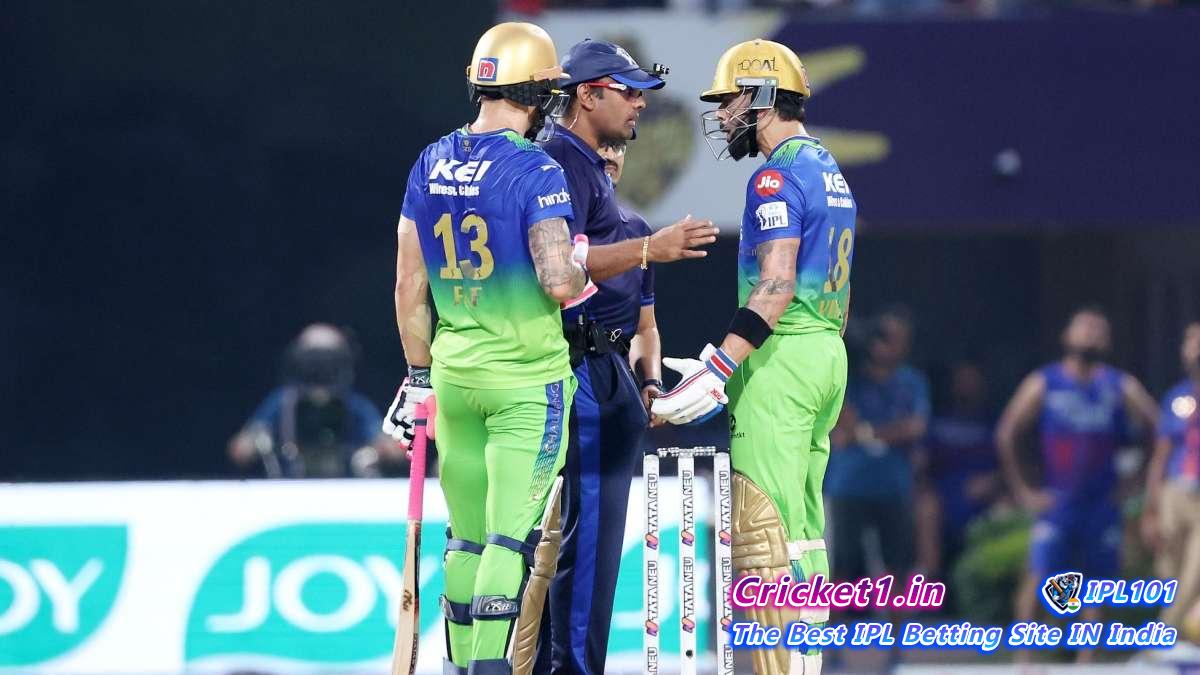
The cricket world witnessed a highly contentious moment during the recent IPL match between Royal Challengers Bangalore (RCB) and Kolkata Knight Riders (KKR), generating a whirlwind of debate and dissatisfaction regarding the nuances of cricket regulations. The incident involved RCB’s stalwart, Virat Kohli, who was dismissed under controversial circumstances that left players and fans alike clamoring for a revision of the rule book.
The episode unfolded in the third over of RCB’s run chase when Kohli faced a high full toss from a KKR bowler. Reacting swiftly, Kohli hammered the ball, but was adjudged out, much to his disbelief and subsequent fury. The former RCB skipper hit the ball above waist-height as he stepped out of the popping crease, a fact that typically signals a no-ball unless the batsman moves down the wicket toward the bowler, as per the existing cricket laws.
RCB captain Faf du Plessis, present at the non-striker’s end during the incident, expressed his perplexity at the post-match presentation. “It was crazy, rules are rules. Virat and I thought that the ball was higher than the waist,” du Plessis commented on the dismissal. “I guess they measured it from the popping crease, one team thinks it’s high, the other doesn’t. That’s how the game goes at times,” he added, highlighting the subjective nature of the ruling which depends on the batsman’s position.
Adding to the controversy, RCB’s bowler Reece Topley called the dismissal a “grey area” and advocated for clearer regulations. “Obviously, those measurements are brought in to get rid of a grey area, and then you have something today that no one had thought of,” stated Topley, reflecting on the ambiguity of the rule when the batsman steps out. “He (Kohli) was out of his crease and the ball was over his hip high when he was down the wicket – the measurement was taken with Virat inside the crease so it’s a bit of a grey area,” Topley explained further.
This specific incident has stirred a considerable debate around the fairness and clarity of cricket rules concerning full toss deliveries. The rule, as it stands, can lead to different interpretations depending on the umpire’s perspective and the match situation. “Obviously, it’s a fine margin and will be spoken about in a game where the victory margin is just one run. We are going to be disappointed. There are two different moods, different feelings about that dismissal. It’s just a grey area,” Topley added. He emphasized the mixed feelings within the camp and the cricket fraternity about the need for more precise and universally applicable rules.
This is not the first time cricket rules have come under scrutiny — the sport is known for its complex and sometimes arcane regulations that can perplex even seasoned players and aficionados. Incidents like Kohli’s dismissal fuel ongoing debates about how the sport’s laws are interpreted and applied, and whether changes need to be made to ensure fairness and maintain the sanctity of the game.
As discussions continue, both within RCB’s camp and among the wider audience, calls for clarity grow louder. The grey area identified by Topley reflects a broader uncertainty and inconsistency in the sport; a scenario ripe for review by the governing bodies of cricket. With the spotlight now firmly on this incident, it serves as a critical juncture for potential amendments to rules, ensuring such disputes are minimized in future and that the essence of the game is preserved without ambiguity.

